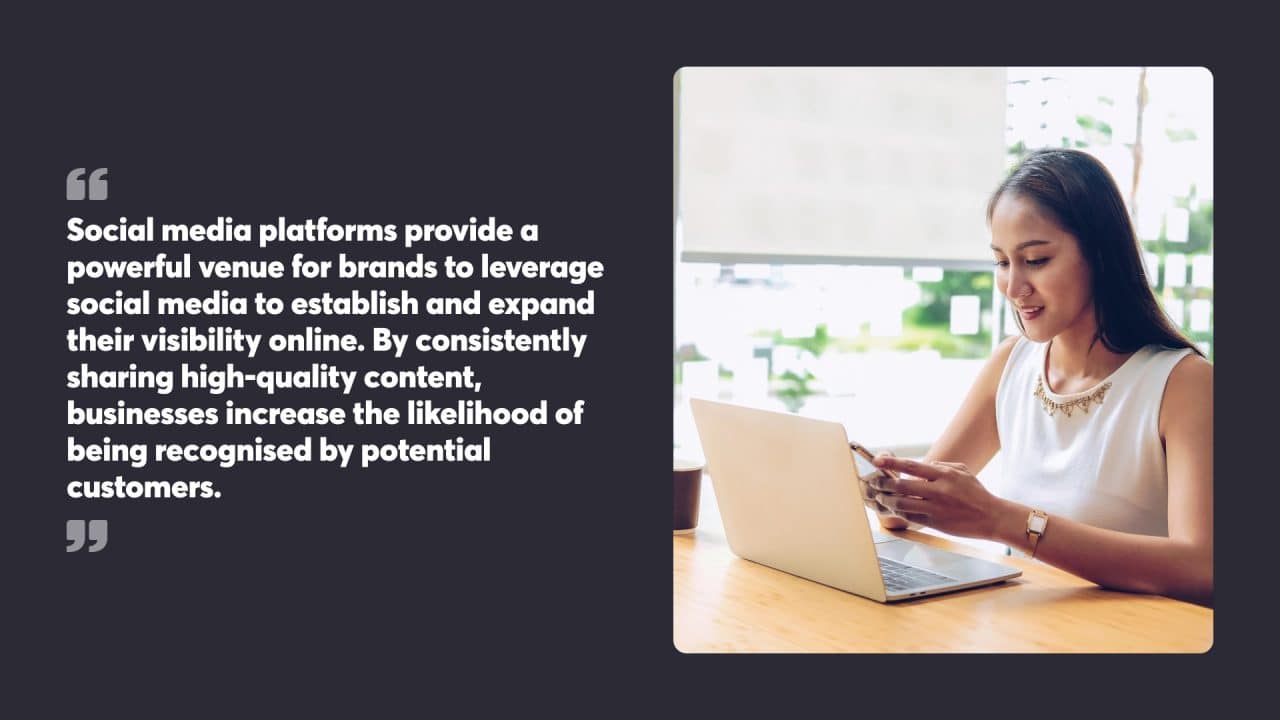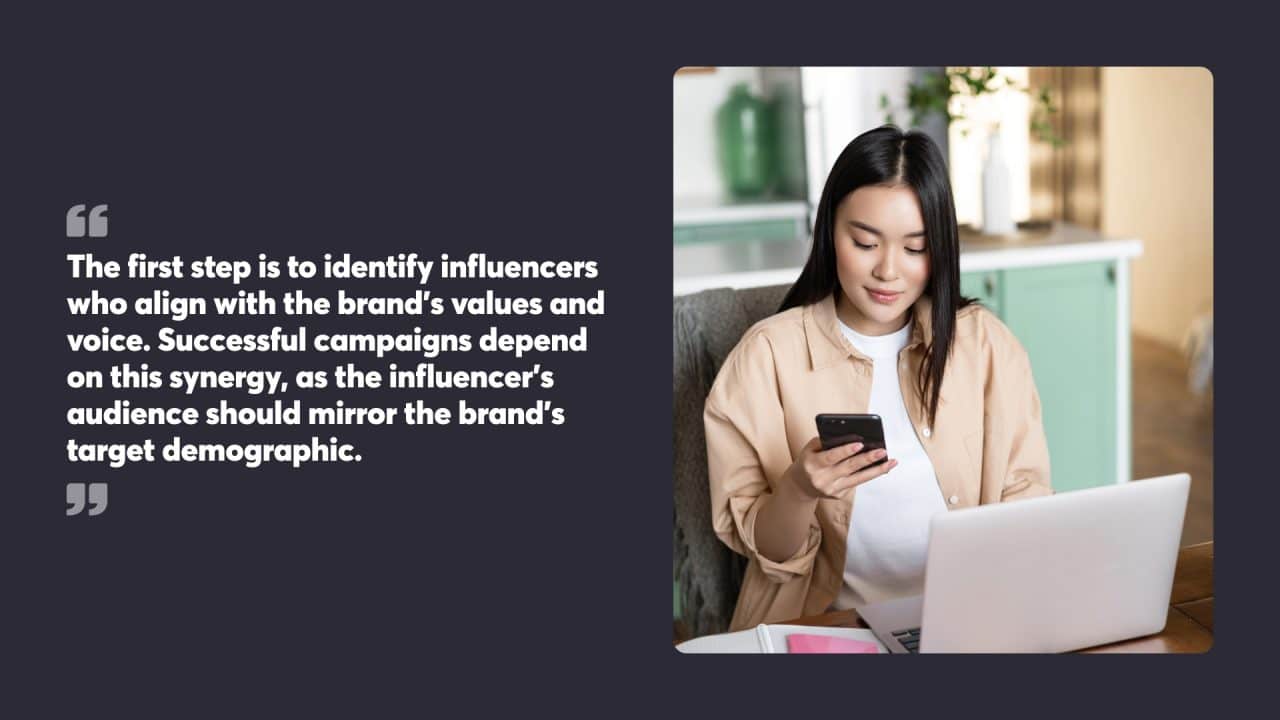
Leveraging social media for website promotion has become an integral part of a comprehensive digital marketing strategy. Social media platforms offer businesses the ability to reach a broader audience, engage with customers, and drive traffic to their website in a way that traditional marketing channels cannot. With billions of active users across various platforms, social media presents an unprecedented opportunity for businesses to amplify their online presence and connect with their audience on a personal level.
Crafting a successful marketing strategy on social media involves understanding your target audience, creating engaging content that resonates with them, and maintaining a consistent brand identity. Engagement is key; by initiating conversations, participating in community discussions, and responding to customer inquiries, businesses can foster a loyal following.
Additionally, the use of analytics allows businesses to measure the effectiveness of their social media efforts, make necessary adjustments, and optimise their strategy to improve results over time. By integrating social media with other marketing channels, businesses can create a cohesive experience for their customers and make a significant impact on their growth.
Key Takeaways
- Maximise Website Traffic and Engagement through Social Media: Social media platforms are essential tools for driving traffic to your website. By sharing high-quality, engaging content and actively interacting with your audience, businesses can significantly increase their online visibility and foster stronger customer connections.
- Consistency and Analytics Drive Success: Maintaining a consistent brand identity and using analytics to track performance are crucial for a successful social media strategy. Regularly analysing metrics helps businesses refine their approach, ensuring content resonates with their audience and meets marketing objectives effectively.
- Integrated Marketing for Cohesive Customer Experience: Integrating social media efforts with other marketing channels, such as email marketing and offline campaigns, creates a unified brand experience. This holistic approach amplifies reach and enhances customer engagement and loyalty by providing a seamless interaction across all touchpoints.

Table of Contents
The Importance of Social Media in Digital Marketing
Social media’s role in digital marketing has become pivotal for brand promotion and reaching wider audiences. Brands that effectively utilise this medium often see significant growth in both market presence and customer base, as it helps increase brand awareness by delivering valuable content and engaging with the audience at a deeper level.
Building Brand Awareness
Social media platforms provide a powerful venue for brands to leverage social media to establish and expand their visibility online. By consistently sharing high-quality content, businesses increase the likelihood of being recognised by potential customers. This approach often leads to enhanced brand awareness, which is vital in today’s competitive market. Tactics that have proven successful include:
- Engaging with audiences through regular posts, stories, and updates.
- Showcasing the brand’s personality and values to connect with users on a personal level.
- Partnering with influencers to access different audience segments.
Expanding Your Audience Reach
Social media networks present opportunities for brands to reach audiences far beyond their immediate geographic location. Strategies beneficial for audience expansion encompass:
- Utilising hashtags to appear in trending conversations and searches relevant to the brand.
- Participating in social forums and groups to introduce the brand to new users.
- Implementing targeted advertising campaigns that appeal to specific demographics across various platforms.
Leveraging major social media platforms such as Facebook, Instagram, and LinkedIn for sponsored advertising can further enhance reach and engagement.

Crafting Your Social Media Marketing Strategy
Crafting a social media marketing strategy involves identifying clear objectives, understanding the audience, and choosing the right platforms to achieve the desired results.
Setting Clear Marketing Objectives
To succeed in social media marketing, developing effective social media strategies and defining clear objectives is essential. These objectives form the campaign’s foundation and dictate the actions marketers should prioritise. Goals may include increasing brand awareness, generating leads, or driving targeted traffic to a website. Determining what metrics will illustrate progress is critical, such as tracking engagement rates, conversion rates, or the volume of social shares.
Understanding Your Target Audience
A deep comprehension of your business’s target audience is pivotal to any social media strategy. Knowing the audience’s demographics, behaviours, preferences, and pain points allows for the creation of content that resonates and adds value. This involves studying the audience’s social media behaviour to understand what content they engage with, the times they are most active and the issues they care about.
Selecting the Appropriate Social Media Channels
Choosing the correct social media channels is vital, as each platform attracts different audience segments and supports various types of content. It’s sensible to concentrate efforts on platforms where the target audience is most engaged.
The selection process involves comparing the strengths and user demographics of platforms such as Facebook, Instagram, LinkedIn, X, and newer platforms like TikTok or Threads to align with the marketing objectives. The content strategy should be adapted to fit the characteristics of each chosen platform, a practice that fosters cohesive brand messaging.
Developing Engaging Content
Developing content that captures attention and encourages interaction is vital for enhancing website promotion through social media. Strong engagement is crafted through strategic planning and the incorporation of audience-driven material.
Utilising User Generated Content
User-generated content (UGC) is a significant resource for creating connections with your audience. This type of content allows customers to contribute to your brand’s story, providing an authentic voice that resonates with new and existing followers. To effectively use UGC, follow these steps:
- Identify: Spot content shared by users that aligns with your brand values.
- Curate: Select high-quality, relevant contributions to share on your platforms.
- Credit: Always give proper credit to the original creators to maintain trust and transparency.
- Encourage: Stimulate more UGC by running contests, creating hashtags, or featuring user testimonials.
In deploying UGC, observe the content’s alignment with brand messaging and the quality of visuals and text.
Creating a Content Calendar
A content calendar is a structured schedule that lays out when and where each piece of content will be published. Here’s how to structure one:
- Planning: Determine the types of content (posts, videos, images) and their frequency.
- Scheduling: Assign specific dates for content to go live, coinciding with peak engagement times.
- Variety: Mix different content formats to maintain interest and cater to various preferences.
- Flexibility: Leave room in your calendar for spontaneous posts, such as trending topics or last-minute content.
- Monitoring: Track the performance of your posts to adjust the calendar for improved engagement.
By systematically planning content, this instrument supports sustained interaction and preserves the effort invested in crafting engaging content.

Optimising for Search Engines
The alignment of search engine optimisation strategies with social media activities can enhance the online visibility of a brand. Mastering this synergy and understanding the role of keywords within these platforms are pivotal for boosting digital marketing efforts.
Integrating SEO with Social Media Efforts
Search engine optimisation (SEO) and social media efforts each play their significant roles in digital marketing strategy. Constructive integration of these initiatives enhances online discoverability and promotes brand awareness effectively. By utilising analytics, marketers can create a feedback loop, where insights from social media interactions inform SEO strategies. This integration also involves aligning content with the search intent of the target audience, thereby improving the relevance and engagement of the content pushed through social channels.
Leveraging Keywords and Hashtags
Strategic use of keywords and hashtags is vital on social media to attract the intended audience. Keywords should be diligently selected to reflect the search terms potential customers might use, thereby increasing the likelihood of content appearing in search engine results. Social media platforms often use hashtags as a method of categorising content, making it more discoverable. Brands should adopt relevant hashtags that resonate with their content and also align with terms sought out by their target demographic.

Leveraging Advertising on Social Media
Advertising on social media provides businesses with the opportunity to reach a targeted audience through a variety of ad formats. By identifying the most effective channels and tools, such as Facebook Ads Manager, companies can strategically place their content in front of potential customers. Maintaining active social media accounts is crucial for driving traffic to the website, improving customer service and experience, and leveraging AI for content creation and engagement.
Exploring Different Ad Formats
Social media platforms offer numerous ad formats to cater to different marketing objectives. Carousel ads, for instance, allow advertisers to showcase multiple products or features within a single ad by rotating through various images or videos. Video ads are highly engaging and can convey a brand’s message quickly, as they tend to have a higher retention rate with audiences. Sponsored posts, on the other hand, appear as natural content within a user’s feed, but are labelled as sponsored. They blend seamlessly with organic content while still drawing attention.
Facebook Ads Manager is a powerful tool for creating and managing advertising campaigns across Facebook and its extended network. Users can design ads, set budgets, define audience targeting criteria, and analyse performance data to refine their advertising strategies. The tool allows for comprehensive targeting based on demographics, interests, behaviours, and more, enabling advertisers to deliver relevant content to specific segments of their audience.
By experimenting with these ad formats and leveraging tools like Facebook Ads Manager, businesses can effectively promote their websites and engage potential customers on social media.
Analysing and Adjusting with Analytics
Effective promotion on social media is heavily reliant on analysing performance data and making tactical adjustments. Analytics provide the insights that are essential for understanding the effectiveness of strategies and guiding data-driven decisions.
Additionally, leveraging user reviews and feedback on various social media sites can further enhance your strategy.
Using Analytics Tools for Insights
Access to quality social media analytics tools is pivotal for marketers aiming to glean actionable insights from their campaigns. These tools often offer an array of functions including tracking engagement rates, identifying trends, and monitoring reach. Facebook Insights, for example, enables page owners to review detailed metrics about their content’s performance and audience demographics. When evaluating social media analytics tools, factors such as ease of use, affordability, and the ability to generate comprehensive reports should be accounted for.
Relationships between various data points can be disclosed through analytics platforms – insights that are crucial for refining content and targeting strategies. Social media analytics tools can also uncover information on the most productive times to post and which content formats resonate most with audiences.
Understanding Key Performance Indicators
Selecting appropriate key performance indicators (KPIs) is vital to measure the success of social media campaigns accurately. These indicators might include metrics such as likes, comments, shares, clicks, and conversion rates. Analysing these KPIs assists in identifying which aspects of social media campaigns are performing well and which require adjustment.
Marketers might pinpoint particular KPIs that align with broader campaign goals. For instance, if boosting website visits is the objective, tracking click-through rates from social media posts to the website would be imperative. An in-depth analysis of these indicators, especially when coupled with data from tools like Facebook Insights, directs content strategy adjustments and resource allocations to reinforce areas excelling in engagement and revise underperforming aspects.

Influencer Collaboration and Marketing
In an era where social media’s influence is pervasive, harnessing its power through strategic collaborations with social media influencers can be a significant boon to brands. Effective influencer marketing bridges the gap between brands and their target audiences, creating authentic connections and driving engagement.
Choosing the Right Influencers
The first step is to identify influencers who align with the brand’s values and voice. Successful campaigns depend on this synergy, as the influencer’s audience should mirror the brand’s target demographic. Brands should look for influencers with:
- Engagement rates: High interaction levels indicate an influencer’s ability to connect with their audience.
- Authenticity: Genuine content resonates more and can influence consumer behaviour effectively.
- Relevance: The influencer’s niche should complement the brand’s industry or message.
Measuring Influencer Campaign Success
To measure the success of an influencer marketing strategy, specific metrics must be monitored:
- Reach and Impressions: How many people have seen the influencer’s content?
- Engagement: How actively is the audience interacting with the content?
- Conversion Rates: How many audience members are taking the desired action?
Tracking these metrics allows brands to assess the campaign’s effectiveness and make data-driven decisions for future marketing endeavours.

Promoting Customer Engagement and Loyalty
Effective promotion of customer engagement and loyalty involves creating a sense of community and ensuring satisfaction through targeted interactions on social media platforms.
Fostering Community Engagement
To establish a strong community engagement, companies should focus on interactive strategies. They might start with compelling content that sparks conversation, encourage the sharing of user-generated content, and host virtual events or challenges. These activities lead to deeper connections between the brand and its audience, creating an involved community around the brand’s values and narrative.
- Interactive Content: Polls, quizzes, and open questions
- User-generated Content: Hashtags for sharing experiences
- Virtual Events: Live Q&A sessions, webinars
Companies should respond promptly to comments and direct messages, demonstrating attention to individual customer experiences. Offering exclusive community benefits or insider information to followers often increases engagement levels and commitment to the brand.
Enhancing Customer Satisfaction
A satisfied customer is more likely to return and advocate for a brand. Social media serves as a direct line for customer service enquiries. Addressing concerns quickly and effectively on these platforms can significantly improve customer satisfaction. Incorporating customer feedback into service improvements and product development also conveys that a brand values customer input, fostering loyalty.
- Immediate Response: Utilising chatbots for quick replies
- Personal Attention: Personalised responses to enquiries
- Customer Feedback: Surveys and feedback channels
Additionally, showcasing customer success stories and testimonials on social media platforms can validate the customer’s decision to engage with the brand, enhancing their overall satisfaction and likelihood of recommending the brand to others.

Integrating Social Media with Other Marketing Channels
Effective integration of social media with other marketing channels amplifies reach and unifies messaging across platforms, leading to a cohesive marketing strategy.
Complementing Social Media with Email Marketing
Integrating social media into email marketing involves embedding social sharing icons and cultivating content that readers are encouraged to share. By doing so, marketers can extend their reach beyond their existing email subscriber base, harnessing the networks of their current audience. Regularly featuring social media content in email newsletters keeps subscribers informed and engaged with the brand’s social media activity.
Campaigns should focus on sharing useful, share-worthy content that provides value, such as exclusive discounts, compelling visuals, or informative articles. Email can act as a driver, directing traffic to social media platforms where further interaction can take place, strengthening the relationship between a brand and its consumers.
Synergising Offline Campaigns with Online Presence
Linking offline campaigns with an online social media presence requires strategic alignment of messages and brand identity. When they attend an event or see a billboard, consumers should be able to connect the experience with a brand’s social media narrative. QR codes, hashtags, and social media handles prominently displayed on offline materials can facilitate this connection.
For instance, a flyer for a product launch may include a hashtag that attendees can use to share their experiences on social media. This broadens the campaign’s visibility and also creates a shared community experience that is accessible digitally. By harmonising offline marketing efforts with an online strategy, businesses can track success through social media engagement and traffic, making the integration measurable and actionable.

Evaluating the Impact of Social Media on Business Growth
Social media platforms have become crucial for promoting sustainable business growth. Visibility on these platforms contributes to an organisation’s social media presence, which can significantly influence customer acquisition and retention. Companies leveraging social media effectively see notable improvements in their ability to reach new markets and engage with customers on a personal level.
In analysing the impact, business owners should examine metrics such as changes in web traffic, customer engagement rates, and conversion statistics. These figures often reflect the effectiveness of social media as a tool for business promotion. For example, an upsurge in website visitors from social media links could indicate successful content strategies and advertisement campaigns.
Businesses should regularly audit their social media strategy to make informed decisions. This involves assessing content reach, interaction levels, audience demographic data, and overall customer sentiment. Insights gathered from such data can guide the refinement of social media campaigns to better align with business growth objectives.
Social media also fosters interaction between businesses and consumers, cultivating relationships and fostering brand loyalty. By responding to customer inquiries and feedback promptly, businesses can demonstrate their commitment to customer service, which can itself be a potent driver for growth.
Social media is no longer just an optional marketing channel but essential for achieving business goals, and business owners must stay ahead of social trends and platform updates to maintain a beneficial social media presence that promotes long-term business growth.
At Chillybin we believe in a holistic approach to digital marketing, and take the time to analyse what content resonates best with your target market, and then work out which platform will connect you to your goals faster.
To see how digital marketing can take your business to the next level, contact us today.




